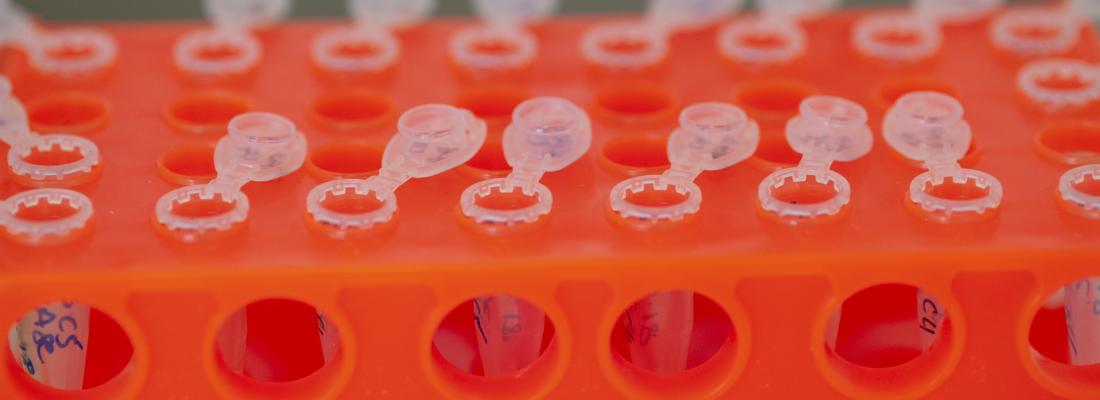Food, Global Health Reading time 3 min
Q&A with Muriel Vayssier-Taussat, CARE member: what comes after the lockdown
Published on 02 April 2020

How does CARE operate?
Muriel Vayssier-Taussat: We have 12 members with complementary skills from various French research institutes. We receive requests for guidance from the government and work to quickly gather information to issue an opinion. We divide up the topics according to our expertise and generally communicate via email and telephone. We also hold a weekly meeting with all committee members. Our four areas of focus are: diagnostic testing, treatments, vaccines and using AI to help overcome the epidemic.
What was the first issue you tackled?
M. V-T.: We were asked about the various tests that are available or in the process of being brought to market. Serological tests detect the antibodies in blood that the body produces to fight off the virus. They could be used to identify people who have been infected and have immunity. Knowing the level of immunity in the general population would allow us to estimate the risks of the epidemic rebounding when we come out of lockdown. We estimate that around 50% to 70% of the population needs to have immunity to stop the spread of the virus. These tests, like PCR (1) tests, could initially be used to identify those who are most exposed, such as healthcare workers or staff and residents in care homes.
There are currently around a dozen of these antibody tests on the market now, but we do not always know how accurate they are. Some have a low level of sensitivity, which means they do not always detect positive cases. Their massive use could lead to underestimating the immunity of the population, which is why we quickly need to evaluate these tests.
What about screening for the virus itself?
M. V-T.: When it comes to lifting the lockdown, it will be important to continue screening infected individuals, especially healthy carriers, who will be encouraged to self-isolate. Current screening tests, which use PCR to detect the virus, are highly sensitive and work well. The availability of reagents is a limiting factor right now, but the government has announced the purchase of several platforms allowing reagents to be produced on an ad hoc basis and PCR testing to be conducted, which will enable daily testing to be expanded.
What about treatments?
M. V-T.: Several different treatments are being studied. We’re closely following the Discovery trial, which started on 22 March in several European countries on more than 3,000 patients who tested positive and have been hospitalised, including 800 in France. Doctors should have results by mid- to late April. Another study includes hydroxychloroquine, the effects of which are still controversial, as a preventive treatment.
What can artificial intelligence contribute?
M. V-T.: AI could, for example, be used to detect shortness of breath in the voices of patients who call the emergency services, as this is one of the signs of severe illness.
Each of the CARE members is continuously monitoring innovative paths in their fields of speciality that are being developed in laboratories. Another innovative example is the development of self-testing, similar to pregnancy tests, that people can do at home. Several laboratories are making rapid progress on this.
(1) Polymerase chain reaction tests are based on recognising and amplifying small segments of the virus genome. They detect the presence of the virus.
The Council for Analysis, Research, and Expertise (CARE) was established by Olivier Véran, Minister for Solidarity and Health, and Frédérique Vidal, Minister of Higher Education, Research and Innovation, on 24 March 2020, as part of the government’s measures to fight COVID-19. CARE’s 12 members are researchers and medical doctors, and the council is chaired by Ms. Françoise Barré-Sinoussi, a scientist who discovered the AIDS virus and the recipient of the 2008 Nobel Prize in Physiology or Medicine. Given the variety of topics the council may have to address, including some with an industrial scope, CARE also has a procedure in place to prevent conflicts of interest with regard to its work. The procedure is similar to that implemented for INRAE’s Scientific Advisory Board. Public Declarations of Interest (PDIs) will be made public by early next week on the dedicated website created by the Ministry for Solidarity and Health. The PDIs will be reviewed by the Ministers for Health and for Research, who may request that specific CARE members recuse themselves when necessary. Additionally, a charter is currently being drawn up regarding CARE’s internal operations. CARE is not a decision-making body, but rather aims to gather scientific expertise and issue opinions in response to government requests.
